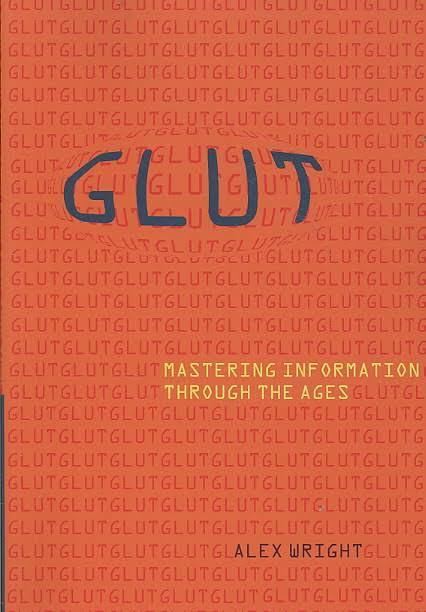7.4 /10 1 Votes7.4
Country United States Publication date 2007 Pages 296 pp | 3.7/5 Goodreads Media type Print (Hardback) Originally published 2007 OCLC 85692734 | |||||||||||||||||||||||||||||||||
 | ||||||||||||||||||||||||||||||||||
ISBN 978-0-309-10238-4 (hbk.) Similar Cataloging the World: Paul Otlet, Everything Is Miscellaneous, The Imagineering Field Gui, The Imagineering Field Gui, Who Governs Scotland? | ||||||||||||||||||||||||||||||||||
Glut: Mastering Information Through The Ages is a 2007 book written by Alex Wright, a writer and information architect for The New York Times. Wright's intention is to provide a broad historical overview of the development of information transmission and organization systems.
"The Web isn't hypertext, it's DECORATED DIRECTORIES! What we have instead is the vacuous victory of typesetters over authors, and the most trivial form of hypertext that could have been imagined"
Chapters
Wright asserts the idea that while networks are currently an en vogue topic of discussion, frequently framed as being in opposition to hierarchical systems, that each co-exists and has always done so. He posits that:
"The fundamental tension between networks and hierarchies has been percolating for eons. Today, we are simply witnessing the latest installment in a long evolutionary drama."
Wright goes on to discuss various aspects of evolutionary learning in numerous contexts. This ultimately leads to the question of whether man's information systems are still evolving, or did they simply stop when we reached our current evolutionary state. Wright looks for a possible answer in the work of sociobiologist E.O. Wilson and his theory of gene-culture co-evolution and 'epigenetic rules':
"Epigenetic rules come in two flavors: primary epigenetic rules govern our immediate sense perceptions, such as our universal tendency to perceive the color spectrum in four basic color groups...; secondary epigenetic rules operate at a higher level of abstraction such as the tendency for all human beings to classify objects into opposing pairs like black and white, life and death, heaven and earth—notions that have no physical component in the human brain, yet seem to recur across human cultures."
That is to say, we are predisposed toward classification.
Wright discusses the evolution of symbolic communication and the use of external symbolic objects as a unit of cultural exchange. Wright contend that primitive symbolism in all its forms drove the development of larger, more complex social networks and eventually make way for the evolution of writing
Traces the development of print technology and the subsequent spread of written literacy. The chapter also addresses the role of religious texts and their impact on Western thought. Wright quotes author John Lothrop Motley:
"The eerie conjunction of the printing press, steeply rising literacy rates, religious wars and the witch craze seem significant"
Discusses the evolution of classification systems including the Systema Naturae of Carl Linnaeus, which was hierarchical in nature and standing in opposition to the work of French naturalist Georges-Louis Leclerc, Comte de Buffon, who contended a more holistic approach would be better, taking into account that despite environmental similarities, different regions have distinct plants and animals. He made the suggestion that species may have both "improved" and "degenerated" after dispersing from a center of creation. The chapter title makes reference to the 7 foot moose Thomas Jefferson had shipped to Buffon after Buffon contended that no American animal could be compared to those of the old world. Wright contends that Jefferson to a large degree is an unsung hero of information science, due to his support of the Linnaean hierarchy and his adaptation of table of science originated by Francis Bacon for classification of his personal library.
Brief historical record of the development of the modern library and classification systems by Charles Ammi Cutter (Cutter Expansive Classification system, which was the basis for the top categories of the Library of Congress classification) as well Colon classification developed by S. R. Ranganathan, an example of a faceted classification system and perhaps the most prominent classification system in the Western world, the Dewey Decimal System created by Melvil Dewey
Traces the evolution of the modern day web. Notable discussions include:
"The Web isn't hypertext, it's DECORATED DIRECTORIES! What we have instead is the vacuous victory of typesetters over authors, and the most trivial form of hypertext that could have been imagined"
